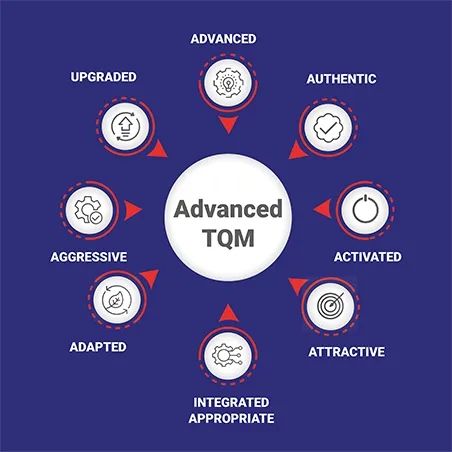
Introduction
Daily Routine Activity Management is the system that provides the ability to manage departments, functions, and processes, wherein processes are defined, standardized, controlled, and improved by the process owners.
Important aspect is that the management should be done on a day-to-day basis. This ensures that daily jobs and daily objectives are accomplished strictly on daily basis. There is a perfect control system built into daily routine activity management which does not ordinarily allow any slip up on daily plans, activities and results.
Business, we know, is now so complex and difficult, the survival of firms so hazardous in an environment increasingly unpredictable, competitive, and fraught with danger, that their continued existence depends on the day-to-day mobilization of every ounce of intelligence.
Purpose
- Appreciate the need and concept of Daily Management.
- Understand principles of Daily Management.
- Be able to plan an action programme for implementation of Daily Management.
Process
- Daily Management concept.
- Element of Daily Management o Clarity of role & responsibility o Standardization and training on standards o Routine maintenance of hardware/ equipments o Abnormality reporting & recurrence prevention
- Process control.
- System for Daily Management.
- Plan for implementation
INNOVATIONS/BREAKTHROUGHS AND DAILY CONTINUOUS IMPROVEMENTS
Innovations/breakthroughs are brought about in any organization occasionally or intermittently. There is a high jump in improvements. These high jump improvements are incorporated in the new practices/systems/processes. Then, after one innovation/breakthrough, there may be a lull. During this lull period and in absence of daily routine activity management or continuous improvements, these dramatically improved processes start degrading or deteriorating. And the processes become inefficient/ineffective. Lots of advantages of innovation disappear or are lost. This is where daily routine activity management comes in. It insists on daily performance and also, daily improvements. It keeps on maintaining and further improving the processes. The fall or degradation of processes is now just not possible. Therefore, daily routine activity management is in fact a management imperative. You cannot do without it (you may occasionally do without an innovation/breakthrough). It may not be as stunning or exciting as an innovation, effective daily routine activity management is the foundation on which maximization of advantages due to innovation and company viability firmly staySLIP-UP ON DAILY ROUTINE ACTIVITY MANAGEMENT MAY MEAN “LOST CUSTOMERS”
-
Customers are got and retained because your organization is giving value to those customers higher than the one given by the competitors.
-
The “value” deliverables to the customers are: products that customers need, overall quality, pre/during/post service level, relationship with the customers, the price customers are willing to pay and acceptable lead time.
-
If the “daily routine activity management” of the departments and the managers do not include the activities meant to deliver the “value” thus understood and they are not executed as per the daily plans, the entire value chain becomes weak and value creation and value transfer process suffers. Ultimately the delivered value is less than the one the customer expected or less than the one promised to the customer.
-
One such single failure or its repetition may result in “lost customers”.
- The lost customers may take away from your organization many more customers by simple “word of mouth” anti-publicity
-
Getting back lost customers is a very expensive proposition.

